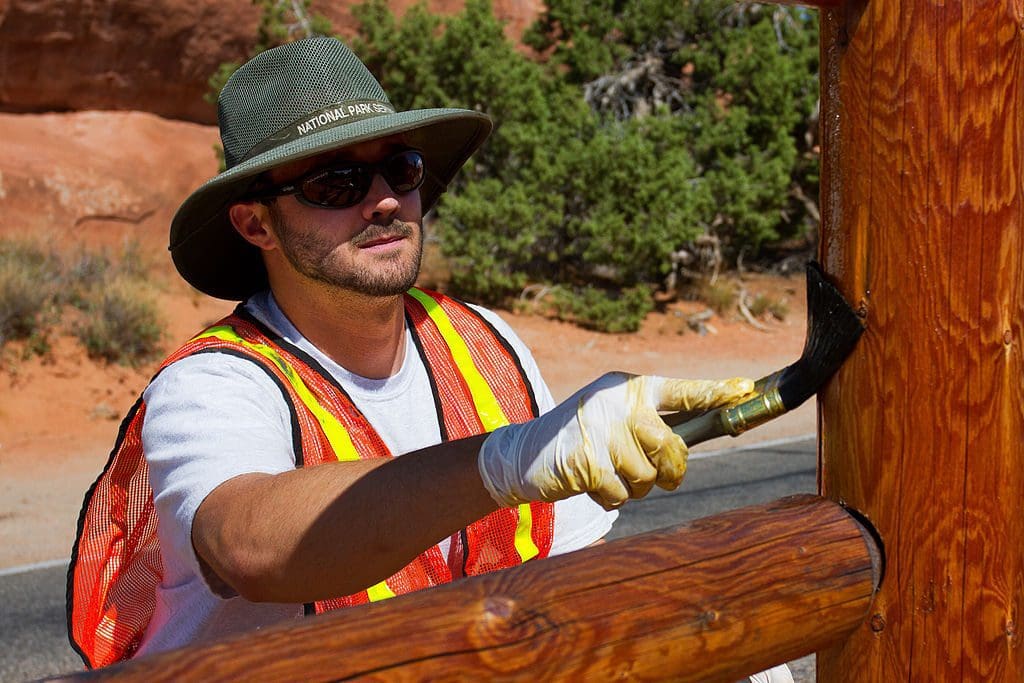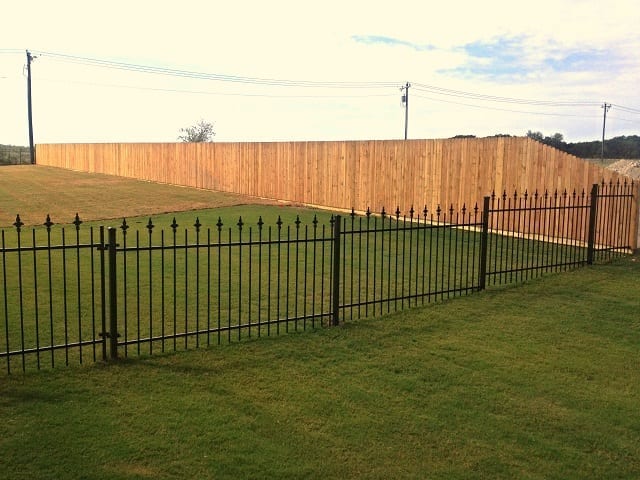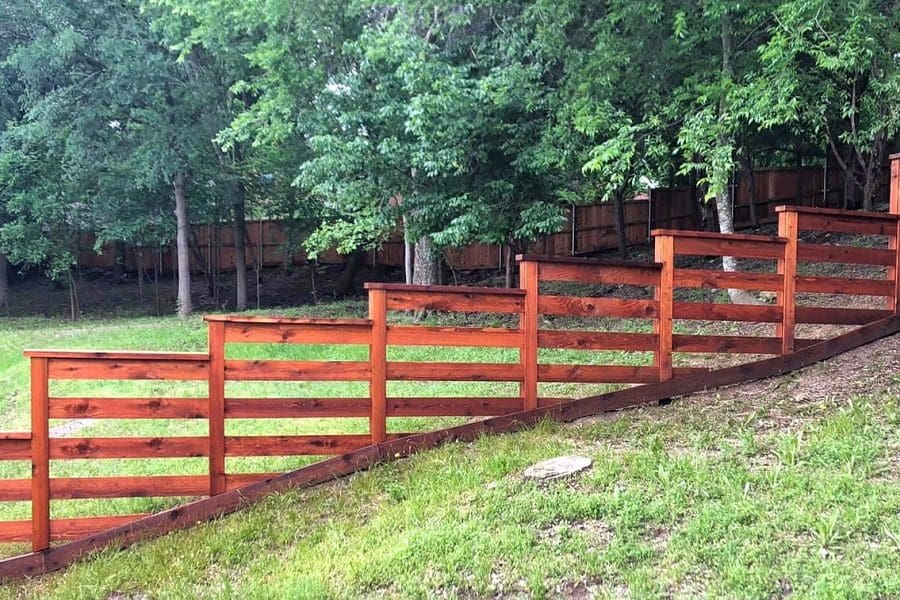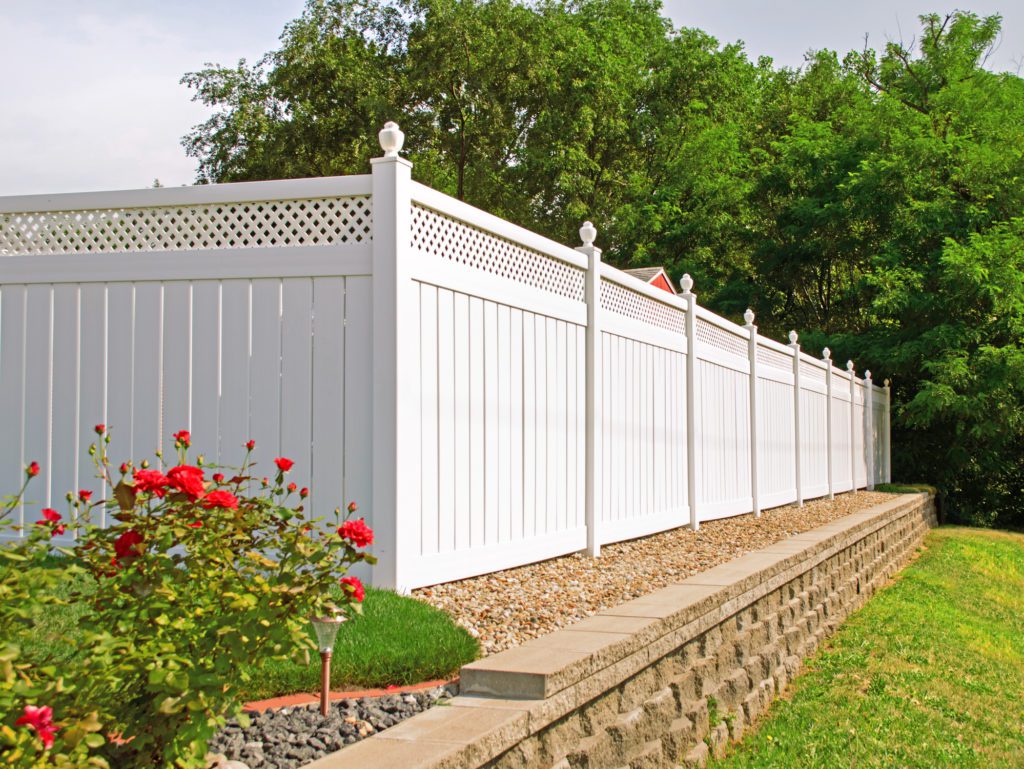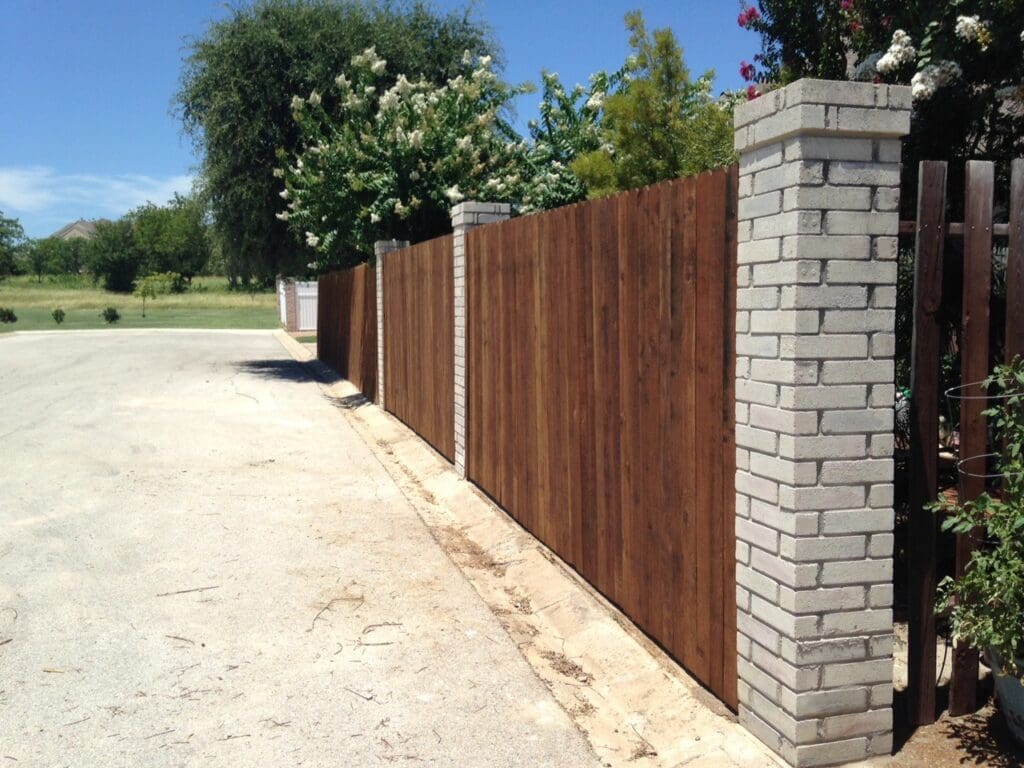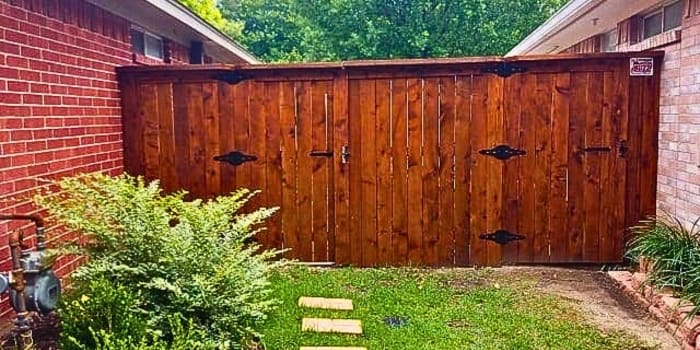Fences are the unsung heroes of our homes. They keep out unwanted guests, safeguard our beloved pets, and when the weather gets a bit feisty, they bear the brunt of it.
In Texas especially, we know all too well how our fences are constantly subjected to the unpredictable whims of the weather. From the turbulent wind gusts to the piercing sunrays and the annual freeze-thaw cycles, the elements here can be exceptionally unforgiving.
DFW, Austin, and Houston residents, for instance, are well-acquainted with the constant battle against average wind speeds of 10.7 miles per hour – which lasts for around seven months each year.
However, it’s not just the weather we must contend with – there’s also trespassing from both two-legged and four-legged intruders. Over time, all these factors could turn your once splendid fence into an unsightly barrier that offers little protection
So, what’s the solution for us Texans? Well, that’s where reinforcement comes in. Reinforcing your fence is like giving it a superhero’s shield, helping it stand tall against the elements and any unwelcome visitors.
How to Brace Your Fence Against Wind and Intruders
With the ‘why’ already established, let’s proceed to the ‘how’. The following is a step-by-step breakdown of the entire reinforcement process – from the foundation to the rails.
Stronger Foundations: Reinforcing Your Fence Posts
Our first stop on this reinforcement journey is the fence posts, which serve as the backbone of your fence. Whenever they get weak, the entire structure becomes vulnerable.
Here are two ways you can strengthen those posts:
1. Add Concrete Footings
Concrete is a remarkably durable material known for its ability to withstand the test of time quite well. By incorporating concrete footings beneath your fence posts, you provide a solid foundation that prevents leaning or shifting over time. This is particularly crucial for tall fences that consistently face the strong Texan winds.
To add the concrete footings to your fence, you’ll need to excavate around each post that requires reinforcement. Next, pour concrete into their respective holes and then carefully reposition the fence posts while ensuring they are perfectly aligned.
In the warm Texas weather, expect the concrete to start hardening within 45 minutes or less. You should, however, leave the posts undisturbed for the subsequent 48 hours. This allows the concrete to fully cure.
And once the curing is done, try to apply a line of clear silicone caulk at the joint connecting the post and concrete. You should then inspect the joints on a regular basis while reapplying the caulk to preserve their integrity.
2. Use Metal Post Brackets
Metal brackets are like the glue that holds your fence together, connecting and supporting various parts of the structure. Depending on the design of your fence, you might need corner brackets, rail brackets, or T-brackets.
To install them, start by measuring and cutting your brackets to fit your specific fence. You should then align and level the brackets on the fence posts or rails that need reinforcement, before marking the screw or nail holes with a pencil. The final step is to pre-drill pilot holes at the marked positions to prevent wood splitting, and then use them to attach your metal brackets to the fence.
Build a Fortress by Reinforcing Your Fence Rails
Now, shifting focus away from the posts, let’s look at the fence rails. These horizontal components are also pivotal in ensuring the durability and steadiness of your fence.
Below are two ways to reinforce your fence rails and keep them standing strong against both the weather and intruders.
3. Add a Sister Rail
A sister rail, in fencing terminology, is an additional rail anchored to a pre-existing one. This is meant to double the strength of the original. If you’re a do-it-yourself enthusiast, you’ll find the technique to be both cost-effective and efficient for bolstering your fence’s resistance to weather elements and pressure from intruders.
The procedure for adding sister rails is as follows:
- Begin by identifying the weak or sagging rails that require reinforcement. Measure the length of these rails and then cut the sister rails accordingly. Remember to smooth out any rough edges to create a snug fit and prevent any potential injuries.
- Position your sister rails parallel to the existing ones – making sure they align perfectly and cover the entire length of the rails being reinforced. You could then use screws or nails to securely attach the sister rails to the existing ones.
- For added strength, consider using metal connectors or L-brackets at the joints where the sister rails meet the existing rails. These connectors provide additional stability and prevent any separation between the rails.
4. Install Steel T-Posts
An alternative and effective approach to reinforcing fence rails is the installation of steel T-posts. These posts, shaped like the letter ‘T,’ are known for their superior strength and durability.
Here’s a step-by-step procedure of how you can reinforce your fence using steel T-posts:
- First, determine the distance between the existing fence posts. The ideal spacing is about 8 to 10 feet apart. Then, purchase steel T-posts of the appropriate length while taking into account the height of your fence. You should also get fence rail brackets from your local hardware store.
- Next, dig holes along your fence line to accommodate the T-posts. Check and confirm that the depth of each hole is at least one-third of the length of the T-post. You should then insert the T-posts into the holes, ensuring e they are straight and secure. You might even need to use a post driver or sledgehammer to drive them into the ground until they are firmly anchored.
- Once the T-posts are in place, attach the fence rail brackets at the desired height. And with that, you can install the fence rails into the brackets while confirming that they are level and securely fastened.
All-Around Defense to Reinforce Your Fence
Apart from strengthening the foundations and rails, here are two additional methods to reinforce your fence against both the weather and intruders:
5. Add Wind Bracing
The wind might be an invisible enemy, but its effects can be all too visible on a weak fence. One thoughtful way to reinforce a fence against those forces is wind bracing. You basically attach angled supports to the fence for additional stability and resistance against the wind.
The appropriate bracing method for your fence will vary based on its material and design. Some common options include diagonal, horizontal, and H-bracing.
With diagonal bracing, the metal pieces intersect diagonally from the top of one fence post to the bottom of the adjacent post. Horizontal bracing, on the other hand, entails adding extra horizontal supports between the fence posts. Then H-bracing provides a diagonal metal brace between the horizontal bracing.
Whichever configuration you select, ensure that you’ve adequately fastened the braces with screws or nails.
6. Use Privacy Slats
Privacy slats are vertical elements strategically positioned between the pickets or mesh of a fence. From this position, they offer privacy by obstructing the view from the outside. You can, otherwise, use them as a windscreen or noise barrier for chain link fences.
The slats are usually crafted from durable materials such as vinyl, wood, aluminum, or composite materials. You’ll also find them in a wide range of lengths, widths, and colors – meaning they’re easily compatible with various fence styles.
To install them:
- Slide the slats through the openings in your fence, while maintaining precise alignment with the top and bottom edges.
- Secure them firmly in place by pushing their locking pins or fasteners through holes in both the fence and the slat itself. The method of attachment may vary based on the type of privacy slats being used.
- For a pristine finish, trim any excess length from the privacy slats using tools like saws or shears.
Don’t let a sagging fence stress you out.
Reinforcing your fence is an essential maintenance task that can significantly extend your fence’s lifespan, improve its appearance, and boost your property’s security. With these six methods, in particular, you get to keep the fence safe and strong against various weather elements and potential intruders.
While you’re at it, remember to prioritize even the aesthetics. Although the primary purpose of these reinforcements is to add strength and durability, they can also contribute to your fence’s overall outlook.
You can, for instance, try choosing materials and designs that match or complement your existing fence and the overall style of your property. That way, you’ll only be building a strong and reliable barrier but also enhancing the curb appeal of your home.
As such, you can think of the entire reinforcement exercise as an all-rounded investment for your property. But, don’t sweat the finer details. Your partners at Buzz Fence will help you not only with the planning, but also with the execution and subsequent maintenance of the upgrades. We have all the expertise, tools, gear, and materials that you need to reinforce your fence.
Get a free estimate today by giving us a call.

